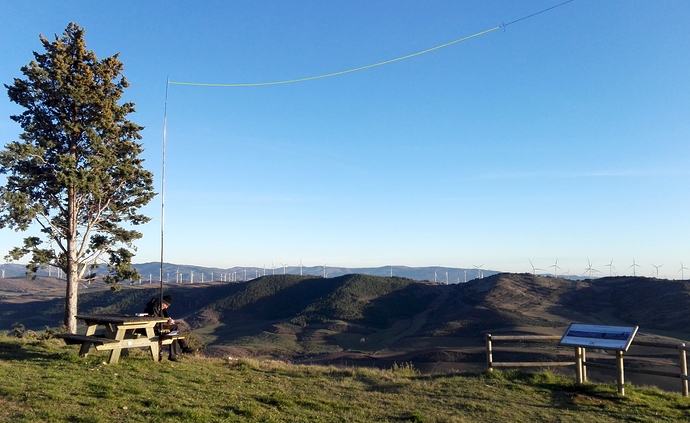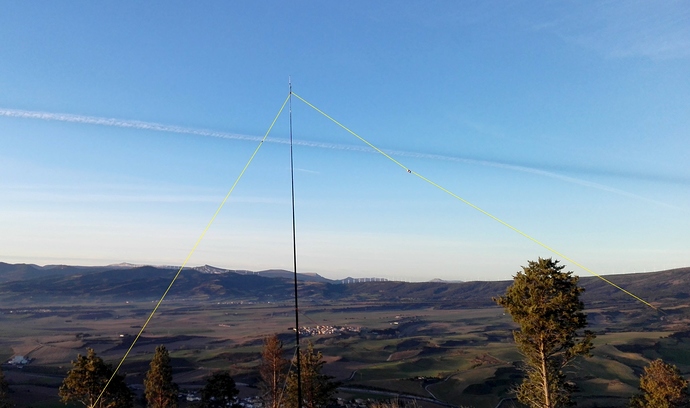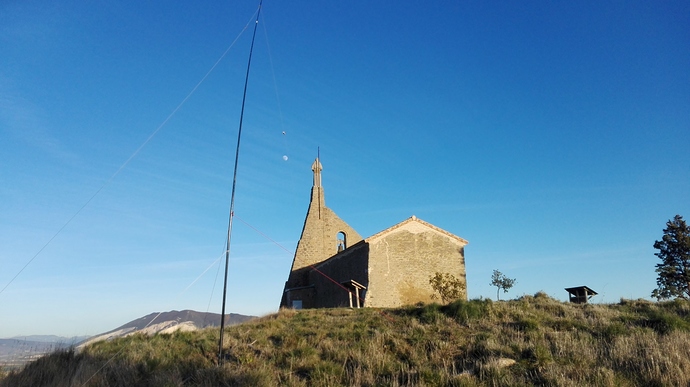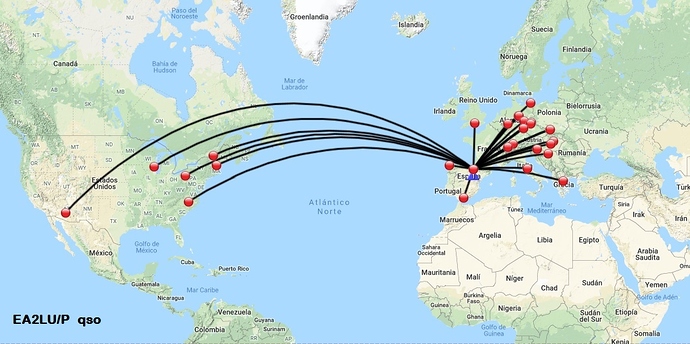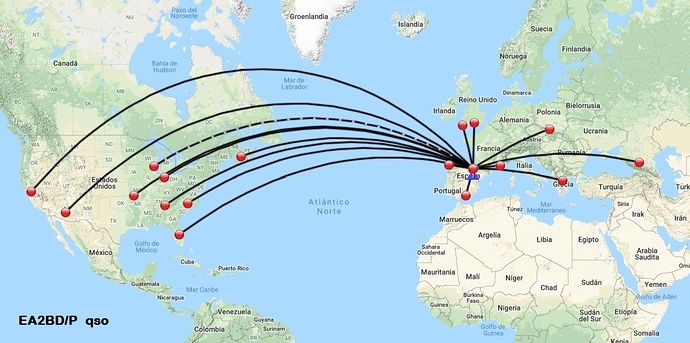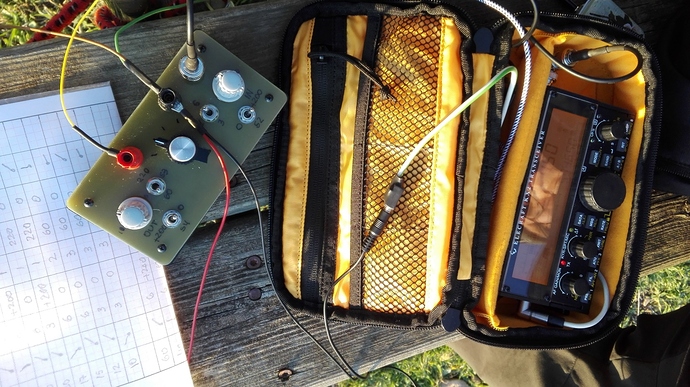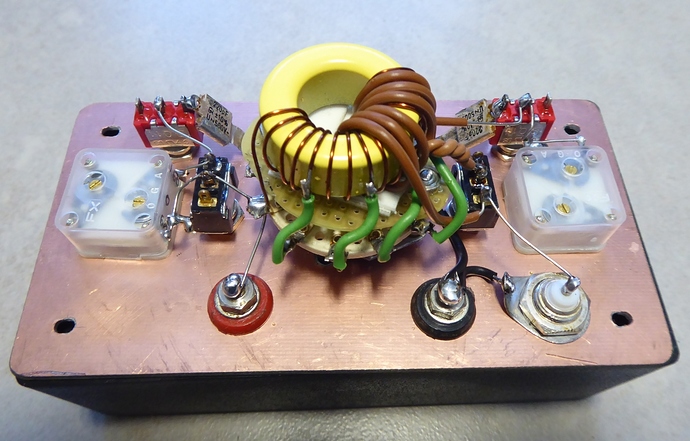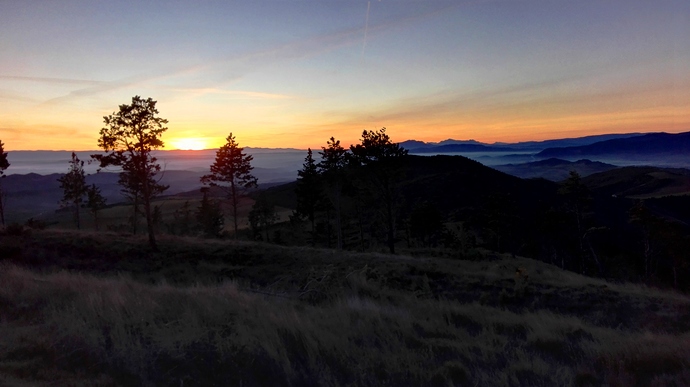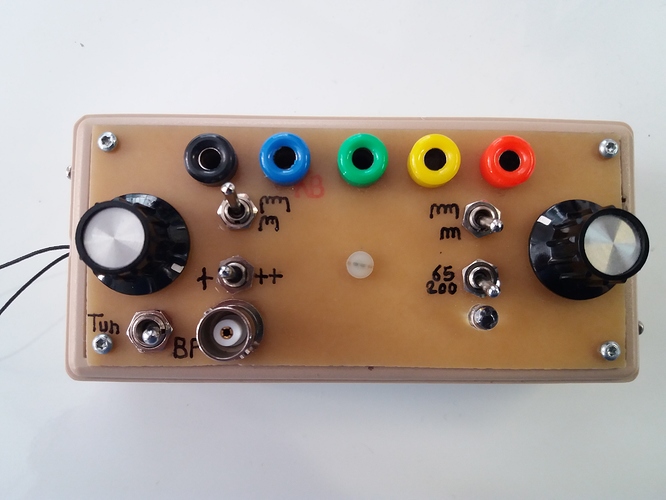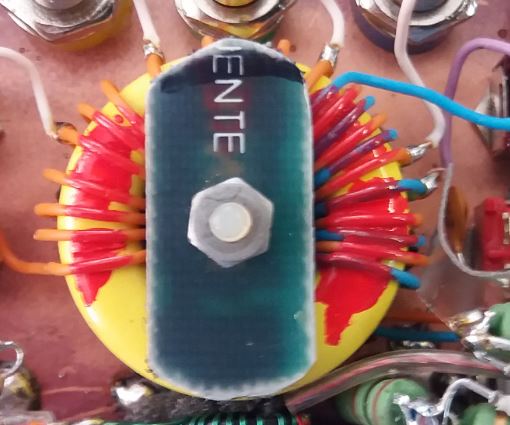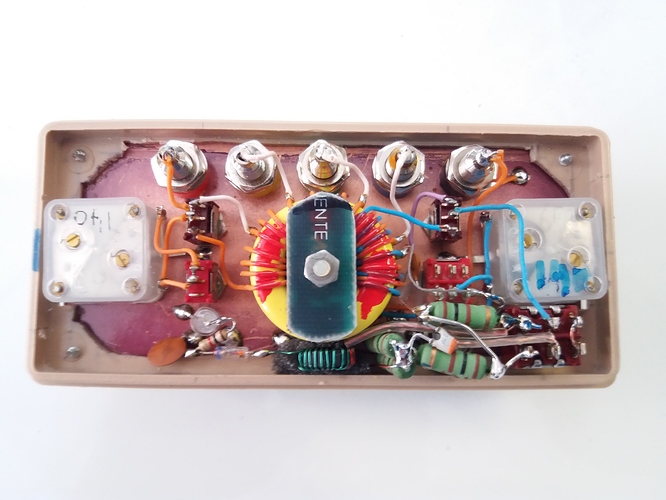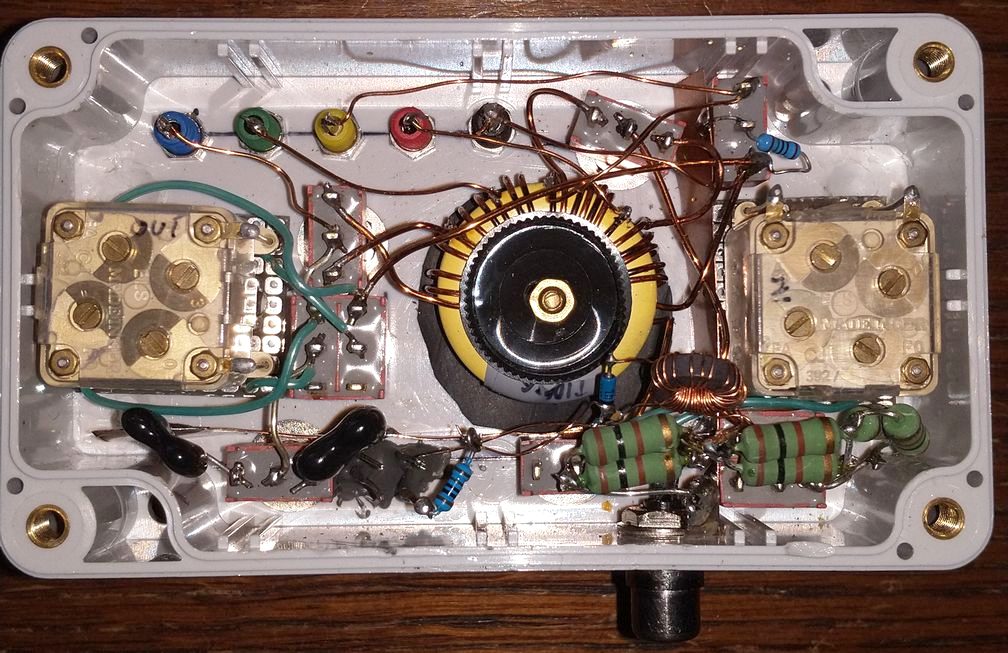Motivation
Jorge EA2LU had receintly finished building a homebrew tuner following a design proposed by George KX0R, who published very detailed plans and info in this thread:
It seems it is a light and efficient tuner and we decided to do a joint activation to try and test his tuner + multiband antenna wire and compare it against my resonant EFHW antenna.
Antenna comparison and tuner performance test
To do the comparison we installed our two radio gear in the summit of Mt. San Martin, a flat and spacious area that allowed us to separate a bit and deploy the two antennas.
See where we put our antennas on this aerial view:
My antenna was a bit further northwest, and perhaps the take off towards NA had an influence in the results. More about this later on.
We tried to deploy a similar setup. Here the details of the two stations:
EA2LU/P:
- Rig KX2, at 5 watt power.
- Ant: 12,5 m long inverted L on a 6 m fish pole, plus 4 radials of 4,25 meters on ground and the homebrew tuner.
EA2BD/P:
- Rig KX3, at 5 watt power.
- Ant: inv Vee EFHW 10m long for 14 MHz, and 14m (with a loading coil) for 7 MHz, on a 6 m long fish pole.
Test procedure:
Before the start of our activation we run CW for some minutes as beacons on 20 and 40 meters sending EA2LU/B and EA2BD/B so that we could see later the resulting RBN spots and compare the signal differente between us.
Sending our callsigns as /B is a way to avoid that a spot is automatically loaded in SotaWatch, so that nobody could think we had already started activating.
RBN data analysis:
These are the results of our beacons:

- 7 MHz:
we knew in advance that my short & coil loaded 14m long EFHW would be less than optimal in this band (at least 20m wire would be required to get a good efficiency) and therefore we see a clear advantage of EA2LU signals on 40 m band. With his 12,5 meter wire that would be approximately a Quarter wave antenna. EA2LU had an advantage of +3 to +12 dB on several receivers when compared to my short EFHW and on top of that he was received as well on some other RBN while I wasn’t. The only one I was better was TF4M.
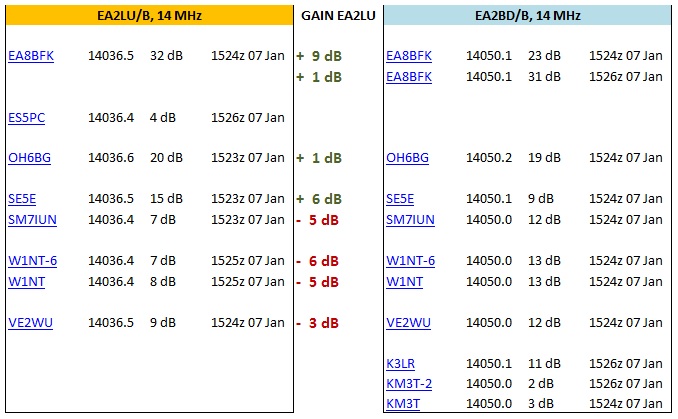
- 14 MHz:
my EFHW antenna is performing much better in this band, because it is a 10 m full length wire (up to the coil for 7 MHz). The difference between us wasn’t that large when compared in European receivers, but anyway Jorge had again good numbers.
In the other hand, when looking at NA receivers I was better.
Is it because of the antenna? The EA2LU longer wire (12,5m) could be producing different wave lobes than mine, and perhaps performed at higher elevation angles (not sure about that). Or maybe my position in the summit facing the northwest side hill could also have the benefit of an improved path towards NA that could explain why I got about +5 dB better on NA RBN receivers than Jorge’s antenna. Meanwhile, Jorge could produce a better omnidirectional pattern that would explain his better spots in EA8, ES and SE.
Jorge tried tuning his wire additionally in other bands and he could tune the wire with ease in the whole range of 80-60-40-30-20 meters. No additional bands were tried in this test
Conclusion : looking at the RBN spots and also at the logbook of Jorge when he ended his activation we felt that the Tuner is working very well. Jorge has now a flexible multiband antenna that performs with good results. We were surprised about his performance in the low bands taking into account its short wire length of 12,5 meters.
Activation (dated 7 Jan 2020)
Once we ended sending the beacons, we started the activation.
Jorge worked CW on 20, 30 and 60 meter band with a good feeling.
He logged 29 chasers being the first 6 qso in his log from NA.
Just before closing down the station, Jorge sent a few calls on 80m to check if his aerial would work there as well. His call was spotted by a RBN in OK!
EA2LU activating at good pace comfortably sat on the bench.
My activation started much worse; I heard first Dani EA5FV/P on 40m CW activating on EA5/MU-043 and tried for a S2S for several minutes unsuccessfully.
Then I started on 20m SSB and just logged 3 stations, being one KB9LQA, thanks a lot!
I spent some more minutes there but SSB was not in good shape. Jorge had moved down to 30m and therefore I switched to 20m CW. I heard for a while NA6MG activating from W6/CT-242 but his signals were very low so I moved and found a clear frequency to start calling.
To my surprise I logged 10 stations in a row being 9 of them from NA!
When I got no more callers I tried a bit on 40m CW and logged 7 more stations. Well, in the end I had 20 qso being 10 from NA, and all different than the ones in Jorge’s log (all these sum up 16 NA chasers for us, not bad for a regular weekday activation!)
My antenna looking back to the hermitage.
The sun was going down and we both agreed to call it a day.
We both were glad and lucky to get these nice DX contacts and therefore all confirmed our gear is working properly (and also lucky that the chasers had good receivers as well!) .
See the maps of all our qso:
EA2LU Tuner
A final word about Jorge’s tuner: he has built a reduced version of this tuner.
He got rid of the SWR indicator led, as he can read SWR on the KX2 built-in meter.
Jorge added a switch to select the tuner coil taps, as LU1MAW did with his version (see thread). See photos of his tuner working and opened:
Jorge will update the KX0R tuner thread with some more details of his version.
To date there are 3 of these Tuners in the world, the original KX0R, the one built by LU1MAW and now this one in southern Europe.
Any other interested to build one of such efficient tuner?
Sun is going down, time to get back home after a lovely day for testing and activating SOTA!
73 de Ignacio and Jorge.

